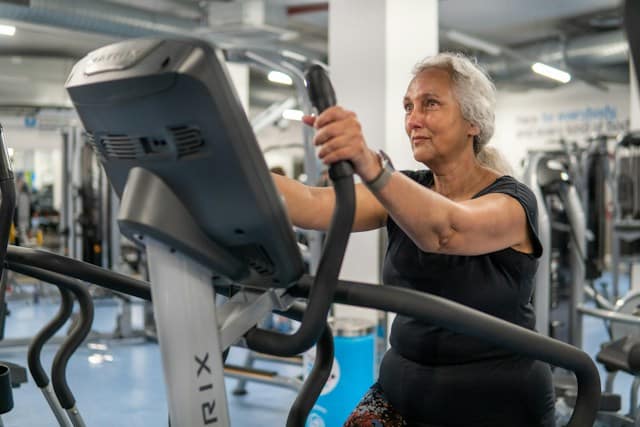The intersection of health and technology forms the vanguard of a revolution, quietly taking place in the homes and lives of the world’s older population. As the global population continues to age, the demand for innovative ways to assist and support this demographic increases. The aging population faces numerous challenges, many of which can be mitigated or resolved through the smart application of technologies. The promise of technology holds the potential to transform how we approach aging, enabling adults to maintain their independence for longer, stay healthier, and live more fulfilling lives.
The Role of Technology in Healthcare for Older Adults
The fusion of health and technology has already begun to shape the future of healthcare for older individuals. Digital healthcare technologies offer myriad benefits, from remote monitoring to telemedicine, which can help manage chronic conditions and preserve independence.
A voir aussi : Is 3D printing the future of personalized prosthetics?
According to a recent study published in the Journal of Medical Internet Research, a significant percentage of older adults have demonstrated a willingness to adopt digital health technologies. The data collected from these participants revealed that 71% of them were willing to use health technology tools to track their health information.
Telemedicine, in particular, has shown significant potential. It enables healthcare providers to monitor patients remotely, reducing hospital readmissions and improving healthcare outcomes. Furthermore, telemedicine can provide a lifeline for older adults living in remote or rural areas, where access to healthcare services can often be challenging.
Avez-vous vu cela : Chatbots and marketing automation
Technology to Support Social Interactions
As people age, social connections may dwindle due to factors like retirement, loss of a spouse, or mobility issues. However, maintaining social relationships is a critical factor in mental health and overall well-being as we age. This is another area where technology can lend a hand.
Social media platforms, video chat services, and even online games can provide older adults with a means to stay connected, engage with others, and stave off feelings of isolation or loneliness. A study conducted by the Pew Research Center found that more than half of adults aged 65 and over now use the internet, and 34% of those are using social networking sites.
Additionally, virtual reality (VR) holds promise for fostering social connections. VR can simulate physical presence in a virtual world, allowing older adults to interact with others in ways not possible in the physical world. For instance, they could attend a family wedding from the comfort of their living room or join a virtual exercise class with people from around the world.
Personalized Care Through Data Analysis
Another key area where technology can play a pivotal role in addressing the challenges of aging is through personalized care. Data from wearable devices and health apps can be analyzed to provide personalized health recommendations and care plans.
Machine learning algorithms can sift through vast amounts of health data, detecting patterns and correlations that humans might miss. These insights can help healthcare providers to anticipate health issues before they become serious and to tailor treatments and interventions to the individual’s needs.
Moreover, predictive analytics can help to identify individuals at risk of developing certain conditions, enabling early intervention. For example, data from wearable devices can help to identify early signs of cognitive decline or heart disease.
Smart Homes and Assistive Technologies
As individuals age, tasks that were once simple can become challenging. Assistive technologies and smart homes can help older adults maintain their independence and continue living in their own homes.
Smart home technologies can automate tasks, like adjusting the thermostat or turning off lights, reducing the physical demands on older adults. They can also provide safety features, such as alert systems if a person falls or forgets to take medication.
Assistive technologies range from simple devices, like amplified phones for those with hearing loss, to more complex systems, such as robotic exoskeletons that can assist with mobility. These technologies can significantly improve the quality of life for older adults, helping them to continue living independently and safely.
The Intersection of Technology and Policy
While technology can offer valuable solutions, it’s also crucial to consider the larger policy implications. Strategies for integrating technology into healthcare and daily living for older adults must be thoughtfully crafted, considering factors like accessibility, affordability, and user-friendliness.
Policymakers must work hand-in-hand with innovators, healthcare providers, and older adults themselves to ensure that the benefits of technology are equitably distributed. Moreover, issues around data privacy and security must be addressed, ensuring that the use of digital health technologies respects and protects individuals’ rights.
In conclusion, as our global population continues to age, the role of technology will become increasingly important. Technology offers a powerful tool to address the challenges associated with aging, from healthcare to social isolation, daily living, and personalized care. The future of aging could look much different with the innovative use of technology, enabling older adults to live healthier, more independent, and fulfilling lives.
The Future of Health Management for Aging Populations
As societies gradually age, the systems in place to manage the health of older adults need to adapt. Thankfully, technology has taken strides in ensuring that the necessary adjustments are in place. Two of the most significant advancements in this field include the broad adoption of technologies and reliance on artificial intelligence.
The adoption of technologies in healthcare has seen a steady increase over the years. According to the United Nations, more than 50% of older adults are now comfortable with using health technologies. These include a range of devices and platforms, from wearable fitness trackers that monitor heart rate and blood pressure to online platforms that allow easy access to healthcare information and services.
In San Diego, for example, a pilot program is underway that uses technology to help older adults maintain their health and independence. Participants are provided with tablets that remind them to take medications, schedule appointments, and even connect with healthcare providers virtually. This not only boosts their confidence in managing their health but also reduces healthcare costs by early detection and management of potential health issues.
Artificial intelligence (AI) also plays a significant role in the future health management of the aging population. Machine learning algorithms can predict potential health risks based on a person’s medical history, lifestyle, and genetic factors. This allows for preventive measures to be put in place, reducing the likelihood of serious health issues down the line. AI can also assist in the administration of healthcare, from appointment scheduling to medication reminders, making healthcare management an easier and more streamlined process for older adults.
Balancing Technology Benefits and Privacy Concerns
While technology has numerous benefits for the aging population, it’s essential to balance these benefits with potential privacy concerns. Technological innovations often involve the collection and use of personal data, which can open the door to potential privacy breaches if not handled correctly.
As we increasingly rely on health technologies, it’s crucial to ensure that these technologies are designed with stringent data protection measures. Encrypted data storage, secure communication channels, and robust access controls are just some of the ways technology providers can protect user data.
Moreover, education plays a crucial role in balancing technology benefits and privacy concerns. Older adults should be educated about how their data will be used, the potential risks involved, and ways they can protect themselves, such as using strong, unique passwords and regularly updating their devices.
Conclusion: Technology as a Catalyst for Quality Life
With the world’s population aging at an unprecedented rate, it’s clear that innovative solutions are required to address the challenges associated with this demographic shift. Technology offers numerous ways of addressing these challenges, ensuring that older adults can continue to live independent, fulfilling lives.
Whether it’s digital tools that facilitate easier access to healthcare, AI algorithms that predict health risks, or devices that assist with daily tasks, technology has the potential to transform how we approach aging. However, in realizing this potential, it’s crucial to ensure that these technologies are accessible, user-friendly, and respect user privacy.
As we look towards the future, it’s clear that technology will play an increasingly pivotal role in supporting our aging population, enhancing healthcare systems, and improving the overall quality of life for older adults. By embracing the potential of technology, societies can ensure that aging populations are not just cared for, but also empowered to live their lives to the fullest.











